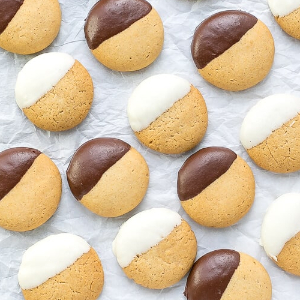We’re nearing the end of our culinary tour of Bulgaria – a culture that has roots in the Slavic tribes but also owes a lot to the Ottoman influence. It’s in a unique position, situated at the juncture of the Balkans, Greece and Turkey. And its desserts and sweets are equally varied and delectable…
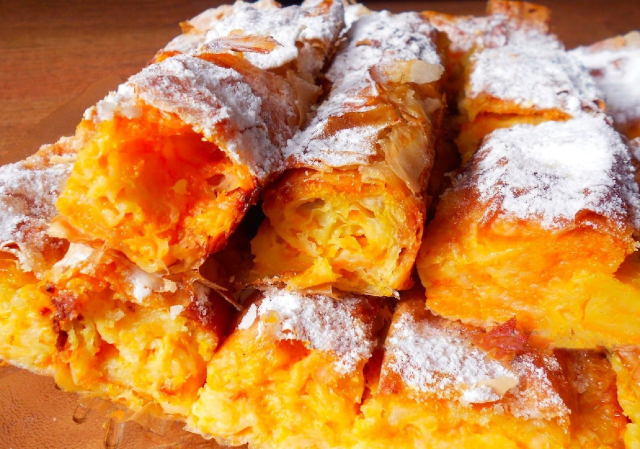 Tikvenik: The Bulgarian national dessert. A Pumpkin-Spice pastry roll-up…
Tikvenik: The Bulgarian national dessert. A Pumpkin-Spice pastry roll-up…
Bulgaria, at first glance, appears to be solidly in the Slavic camp, culturally. But its national cookbook includes recipes all its own. Nowhere in the region is the national dessert tray more varied and colourful…
As in the case of its mains, sides and breads, Bulgarian desserts and sweets owe much to the country’s surrounding cultural influences. We’ll pick and choose from the multitude to highlight the desserts and sweets that are specifically Bulgarian, and some that are familiar but boast a clearly Bulgarian twist…
On our menu today
Tikvenik: ‘Tikva’ means ‘pumpkin’ in Bulgarian. And Pumpkin is, indeed, one of the nation’s favourite ingredients. In this case, a thin layer of pastry is topped with grated pumpkin flesh, ground walnuts, cinnamon and sugar, and rolled up for baking. This is a classic Bulgarian Christmas treat!
Dessert Banitsa: A sweet variety of Banitsa (see yesterday’s episode of ‘Expedition to Bulgaria’) specifically intended as a dessert or sweet treat. Versions of classic Banitsa made with pumpkin or milk pudding filling are reserved for ‘afters’.
Torta Garash: A multi-layer Flourless Chocolate Cake. This national dessert treasure is made from ground walnuts rather than wheat flour, 10 egg whites and a lot of sugar. It’s an angel cake of sorts.
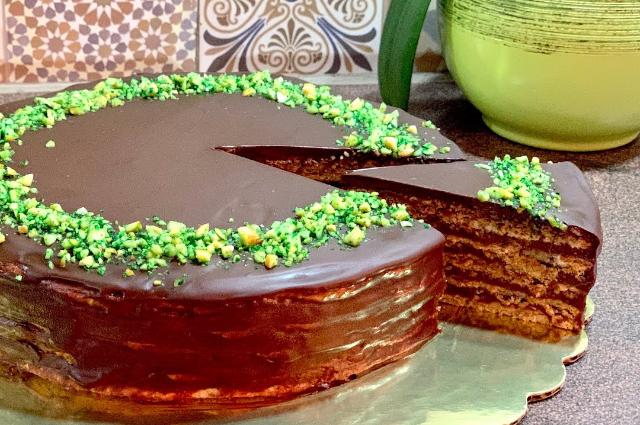
The cake layers are filed with a classic chocolate ganache: cream, sugar and dark baking chocolate. The frosting is similar. The finished cake is sprinkled with grated coconut or chopped pistachios. It’s the birthday cake everyone hopes for!
Marudink: Stuffed pancakes. The pancakes themselves are made by a simple recipe using flour, butter, eggs, baking soda, salt, water and oil. They’re usually made round (about 10 cm / 4 in. diameter) and thick (about 2 cm / 3/4 in.). They’re traditionally topped with fruit jam and dusted with powdered sugar.
Kifla: Rolled Breakfast Pastry. It looks somewhat like a croissante and is rolled up something like one, too. But the pastry itself is different: It’s a yeast-raised dough with an airy, soft, bready interior that just screams to be pulled apart and buttered hot!
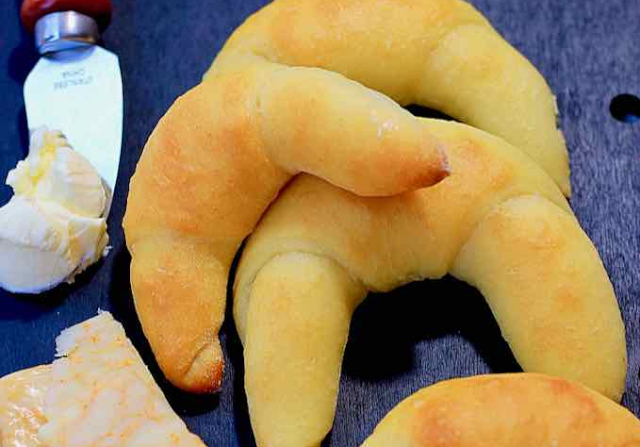
Variations of Kifli are enjoyed across Eastern Europe, but the Bulgarian style is distinguished by its light golden colour, emphasized by a melted-butter and egg white glaze. They’re most often served with a generous dollop of fruit jam. By the way… The term ‘kifli’ has come to mean something very different in urban Bulgarian vernacular!
Kazanlak Doughnuts: Eerily similar to classic Western doughnuts. The recipe is similar, too, but uses milk instead of water, and adds yogurt to produce an elegant, delicate interior texture. Round ones (with a hole in the middle) are traditionally dusted with powdered sugar, and square or round ones with no hole are filled with jam or honey. These doughnuts originated in the city of Kazanlak but are enjoy6ed across Bulgaria.
Kurabiiki: Cakey ‘cookies’. Some say they’re Bulgarian ‘scones’. The recipe is rich, calling for flour, baking soda, lots of sugar, a cup of butter, yogurt and an egg yolk.
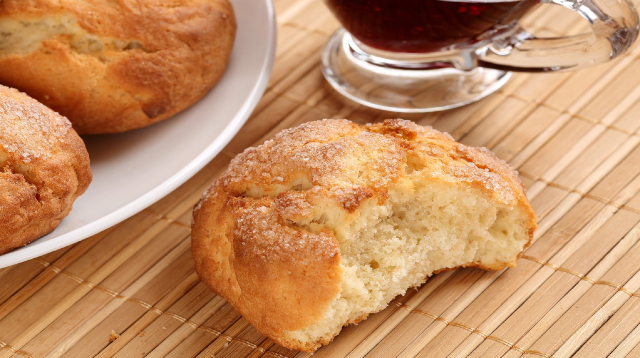
These guys are quick and easy to make; almost fail-proof. They’re enjoyed with coffee every day, all across Bulgaria.
Medenki: Traditional Honey Cookies (see photo, top of page). Just combine flour, sugar, eggs, honey, oil, cinnamon, baking soda, salt and vanilla into a smooth dough. Divide into small balls (use a 2-oz. kitchen scoop for uniformity), and flatten. Bake for 12 to 15 minutes. They come out chewy and delicious. Once they’re completely cooled, dip them half way in chocolate, vanilla icing, or a glaze of your choice. They’re a year-end holiday tradition, and go great with a hot cup of tea or coffee. Or milk for the kids.
Now you’re ready for Bulgarian celebration!
The cakes, cookies and rolls mentioned above are just a few of the traditional Bulgarian desserts and sweets you’ll find in the bakeries and street carts of Sofia and the country’s other cities of note. Rejoice in how easy most of them are to make – and try making some yourself!
~ Maggie J.

